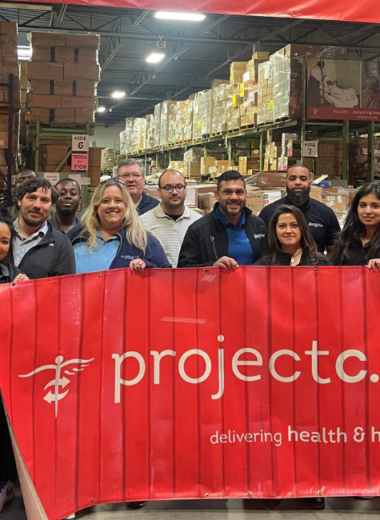This article was originally published on Inside Sources by Rich Fezcko, Director of Systems, Standards and Innovation at Crothall Healthcare
But there’s reassuring news for those who need hospital-based care, from routine wellness check-ups to critical medical attention.
Companies that clean and disinfect hospitals are using better products and innovative technologies to make sure visitors, patients and hospital employees stay safe. My company provides these services at approximately 600 U.S. hospitals and is working daily with hospital executives to keep these spaces safe.
During the past months, we’ve doubled the frequency of cleaning and disinfecting of patient, public and clinical areas. But that’s not all. Here are some of the important safety measures now used at many major U.S. hospitals.
Expanded Cleaning of Operating Rooms, Intensive Care Units and Patient Rooms. More hospitals are using ultraviolet (UV-C) light technology to disinfect every inch of these rooms as an adjunct to manual disinfection. This technology reduces adverse patient risk by breaking down and destroying harmful surface microorganisms, in rapid time, including COVID-19. Amongst the many health systems using UV-C technology, MedStar Health in Virginia, Maryland and Washington D.C. and Memorial Hermann in Houston have used this technology over the past several years as part of their strategic approach to infection prevention. And once COVID-19 patients are discharged at New Jersey’s AtlantiCare Regional Medical Center, all patient rooms are disinfected with UV-C technology.
Sanitizing the Air in Public Spaces. The Centers for Disease Control and Prevention say transmission of the coronavirus occurs much more commonly through respiratory droplets than through objects and surfaces. Several hospitals are using machines from Scientific Air Management (SAM) that scrub the air in enclosed spaces, removing bacteria, viruses, mold, particulates and odor. These machines are essentially an air filtration system, drawing in the air and processing it through a high-efficiency particulate air (HEPA) filter and UV light. Hospitals are using SAM machines in high-traffic spaces, such as emergency departments and waiting rooms.
Electro-Static Mist to Treat Additional Public Areas. Using a solution called Noroxycdiff, this product becomes an electrostatic treatment that disinfects many surfaces, including hard-to-clean spaces on chairs, beds and curtains and is capable of killing the COVID-19 virus and other microorganisms. It’s being safely used, during area shutdowns, in common areas, like cafes, staff break rooms and waiting rooms and in clinical spaces like emergency rooms and patient isolation rooms as part of the discharge process.
Testing “High-Touch” Surfaces for Bacteria. Door handles, elevator buttons, light switches, sink handles and bed rails are touched frequently by multiple people in hospitals every day. We verify these areas are truly clean by monitoring the presence of adenosine triphosphate (ATP), the universal unit of energy in all living cells.
By swabbing high touch surfaces in critical areas of the hospital, we can see if any biomaterials remain. If the surface scores above the approved measurement threshold, the surface is cleaned again. Another adjunct validated treatment, GR-AD Pro, is applied to high touch surfaces, creating an antimicrobial barrier that repels bacteria and harmful pathogens for up to 30 days and allows for additional surface and patient safety protection in between disinfectant applications.
In addition to keeping facilities clean, we are focused on being more intelligent with chemical applications and utilizing more sustainable solutions. The ultraviolet light technology and air filtration systems don’t use chemicals. Additionally, as part of our standard approach, we’ve embraced the use of microfiber as our go-to disinfectant application, which is especially valuable during manufacturing shortages. Microfiber cleaning cloths are an extremely effective option that’s sustainable and reusable.
Optics Are Important. Because many don’t realize the safety measures in place, hospitals are working to heighten public awareness and ease safety concerns.
New York Health + Hospitals, which operates 11 hospitals in New York City, placed banners in waiting rooms and other parts of hospitals to inform patients of the steps being taken to maintain a safe facility. At other hospitals, the SAM air filtration systems are used in waiting areas in plain sight to help visitors understand the safety measures in place.
To those charged with keeping hospitals clean, patient safety will always be our top priority. While we hope the grip this pandemic has on our country will soon be eased, those who need a life-saving medical visit should be assured that healthcare facilities are safe to visit.


